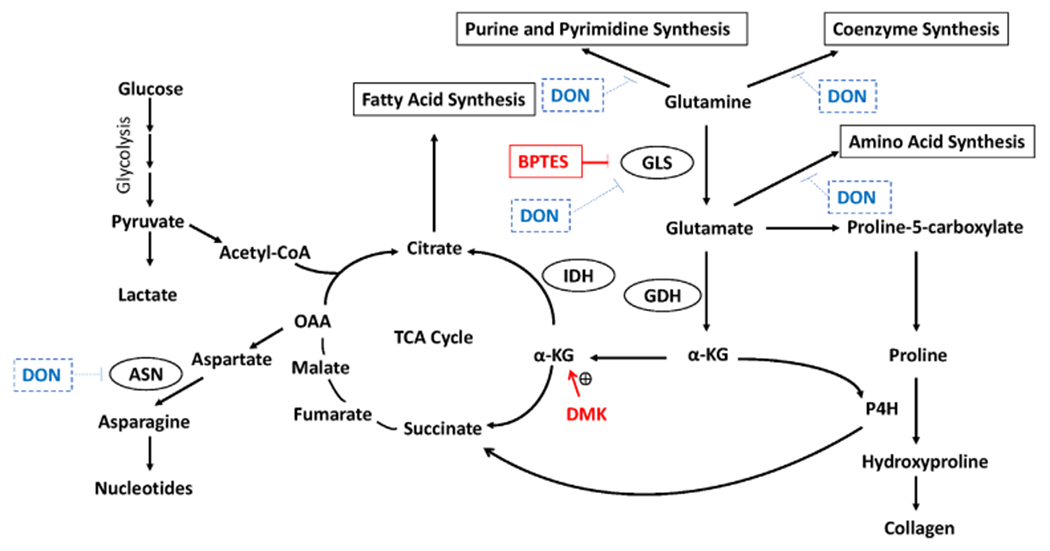Fig. 7.

Different uses of glutamine in hyperproliferating cells. In proliferating cells, glutamine is converted to glutamate by glutaminase (GLS). Then the glutamate can either be converted to α-KG by GDH or contribute to amino acid synthesis and collagen formation. α-KG enters to the TCA cycle for energy production or replenishes the citrate content for the fatty acid synthesis that is essential for proliferating cells. In addition, α-KG is also a cofactor for P4H for the collagen formation that plays an important role for the formation of iLTS scar fibroblasts. Drugs that inhibit glutamine metabolism has been used for the treatment of lung fibrosis and cancer. In this study, BPTES inhibits the GLS to reduce the conversion of glutamine to glutamate and affect downstream metabolic pathways. DON inhibits multiple enzyme which includes GLS, ASN and NAD synthetase and also inhibit coenzyme, amino acids, purine and pyrimidine synthesis. In the present study, DMK, a α-KG analogue, is used to restore α-KG to rescue the inhibitory effect of BPTES. α-KG = α-ketoglutarate; ASN = asparagine synthase; BPTES = bis-2-(5-phenylacetamido-1,3,4-thiadiazol-2-yl) ethyl sulfide; DMK = dimethyl 2-oxoglutarate; DON = 6-Diazo-5-oxo-L-norleucine; GDH = glutamate dehydrogenase; IDH = isocitrate dehydrogenase; iLTS = iatrogenic laryngotracheal stenosis; OAA = oxaloacetic acid; P4H = Prolyl-4-hydroxylase; TCA = tricarboxylic. [Color figure can be viewed in the online issue, which is available at www.laryngoscope.com.]
